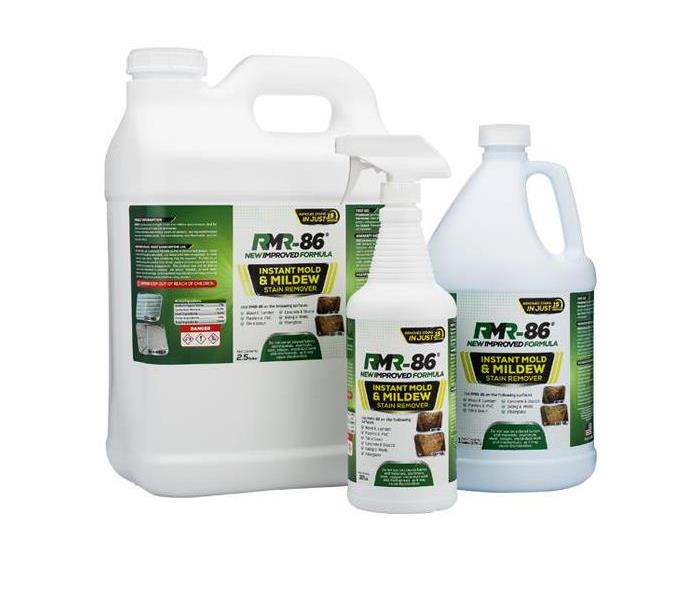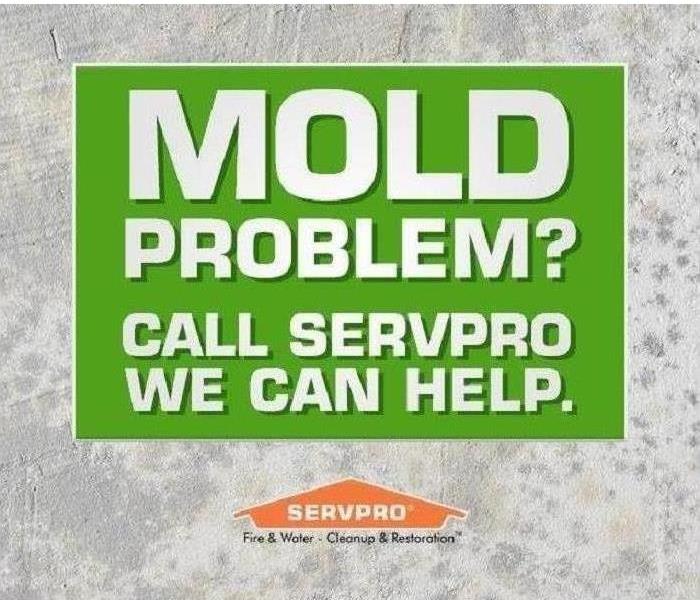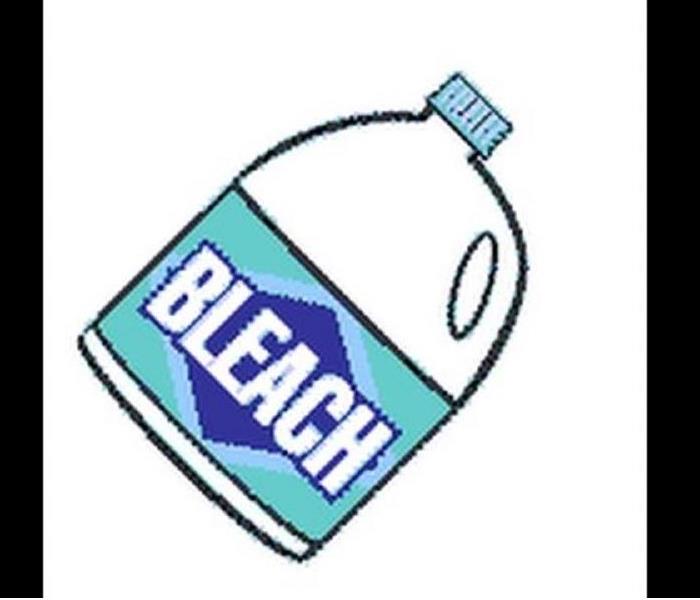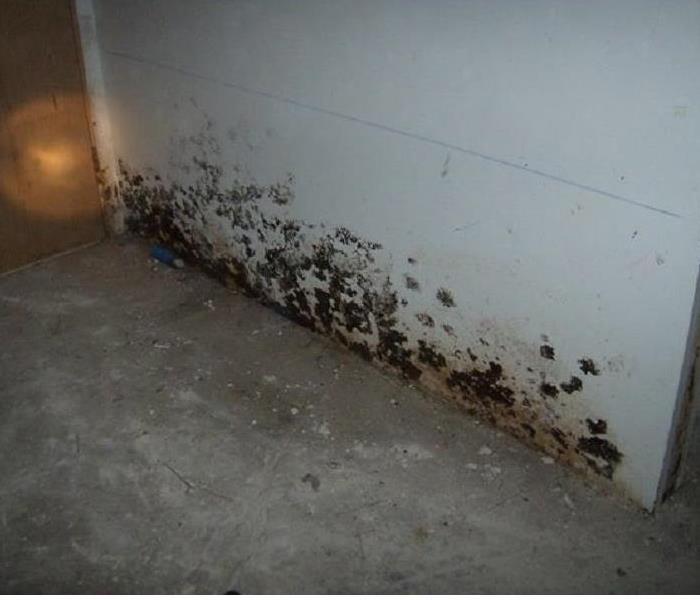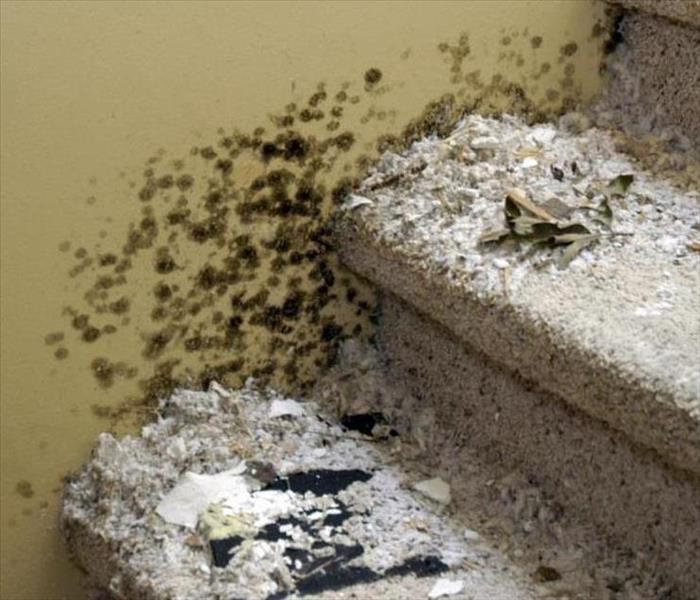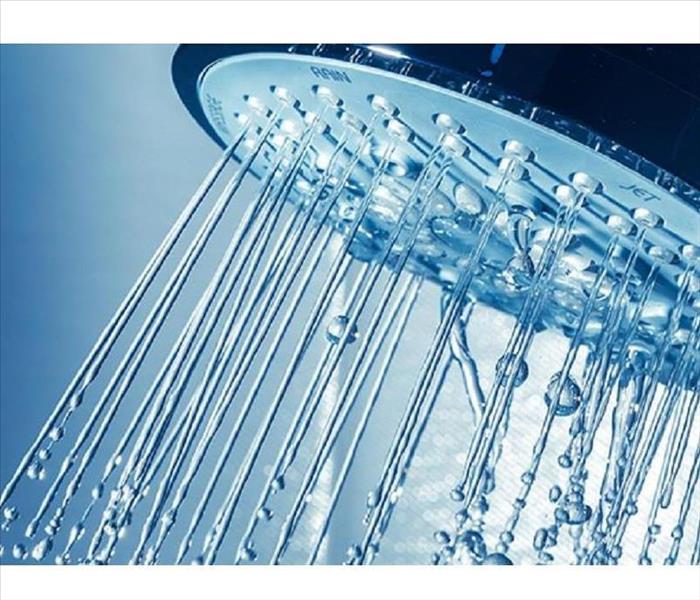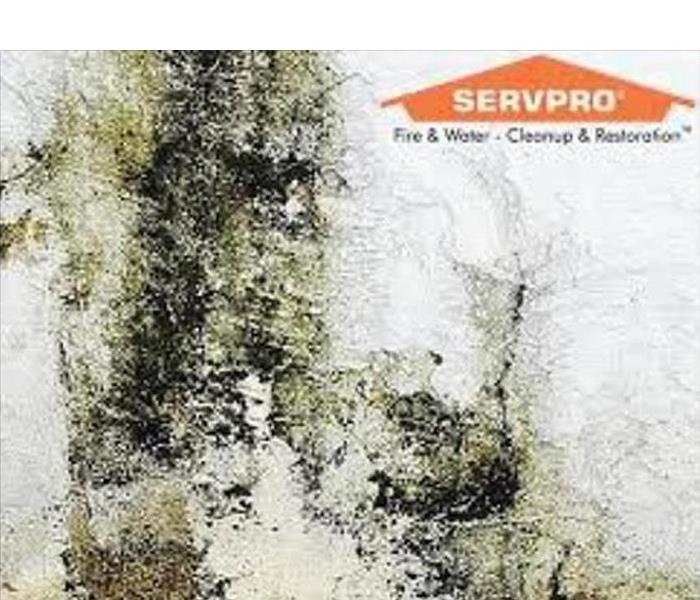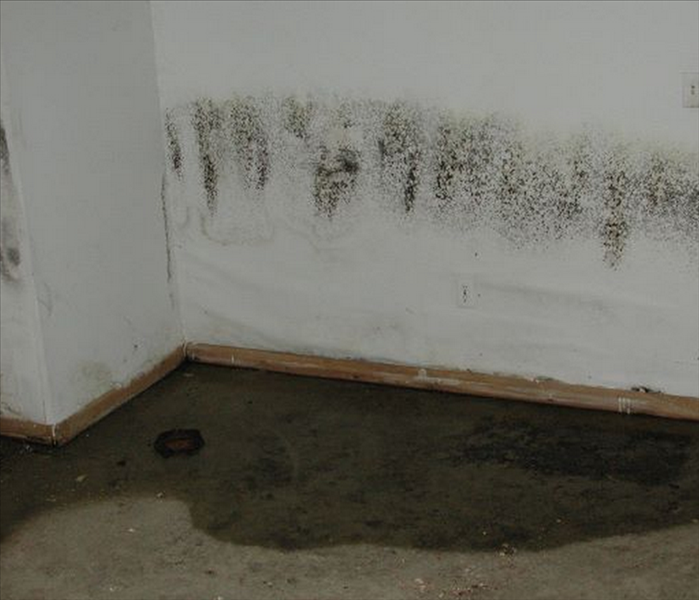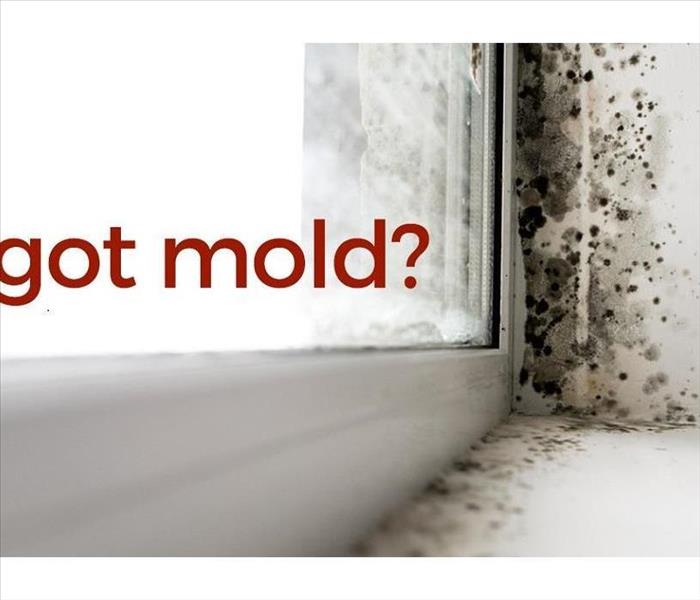We Celebrate All Things Green-- Except Mold
5/21/2018 (Permalink)
Mold is that one green thing we just don’t like and we know you don’t either. SERVPRO of Woodridge/Bolingbrook has been helping customers like you for the past 11 years when microbial growth becomes an issue. If you think that mold and microbial growth may be an issue affecting you, call us at 630-771-1720 so that we can talk through the best course of action for your individual situation. Our goal is to get your property back to preloss condition.
SERVPRO of Woodridge/Bolingbrook has been serving the community since 2008. We are dedicated to helping our customers when disaster strikes and helping to make it “Like it never even happened.” We are ready 24/7, 365 at 630-771-1720 to help you.
Cleaning Mold
5/21/2018 (Permalink)
There are lots of companies who will do a mold inspection/estimate for your company & talk about how they can “clean” mold with bleach. Well, they can certainly try, but it won’t help. SERVPRO of Woodridge/Bolingbrook is committed to remediating the problem completely & correctly so that you can get back to business faster, with less impact on your customers & business. We are able to work with you to limit disruptions allowing your work to go on. Our goal is to get your property back to preloss condition.
For more information on how SERVPRO of Woodridge/Bolingbrook can help you call us at 630-771-1720. We can come out and do an inspection & speak honestly & openly with you about options that you have. We are ready to help 24/7 365 days per year.
Does Your Bolingbrook Home or Business Have a Mold Problem?
4/5/2018 (Permalink)
Microscopic mold spores naturally occur almost everywhere, both outdoors and indoors. This makes it impossible to remove all mold from a home or business. Therefore, mold remediation reduces the mold spore count back to its natural or baseline level. Some restoration businesses advertise “mold removal” and even guarantee to remove all mold, which is a fallacy. Consider the following mold facts:
- Mold is present almost everywhere, indoors and outdoors.
- Mold spores are microscopic and float along in the air and may enter your home through windows, doors, or AC/heating systems or even hitch a ride indoors on your clothing or a pet.
- Mold spores thrive on moisture. Mold spores can quickly grow into colonies when exposed to water. These colonies may produce allergens and irritants.
- Before mold remediation can begin, any sources of water or moisture must be addressed. Otherwise, the mold may return.
- Mold often produces a strong, musty odor and can lead you to possible mold problem areas.
- Even higher-than-normal indoor humidity can support mold growth. Keep indoor humidity below 45 percent.
If your home or business has a mold problem, we can inspect and assess your property and use our specialized training, equipment, and expertise to remediate your mold infestation.
If You See Signs of Mold, Call Us Today – (630) 771-1720
Preventing Mold and Mildew in Your Shower
1/2/2018 (Permalink)
Mold and mildew is a common nuisance in many home showers and bathrooms. Here are some tips and tricks for preventing mold…
PREVENTING MOLD
Mold and mildew can’t grow where it’s dry, so the best way to keep them at bay is to reduce dampness in your bathroom.
- Crack open a window and start your ceiling fan when you turn on the shower so excess moisture moves out of the room, rather than condenses on the walls and tile. Keep the fan running and the window cracked open at least 15 minutes after you turn the shower off to let as much moist air escape as possible.
- Wipe down the shower and tub as soon as you’re finished. Keep a small squeegee in the shower so it’s convenient; you can get a squeegee very cheaply at a hardware store, home goods retailer, or online. Or use a hand towel or washcloth to do the job. A cloth is particularly good at getting to the tile grout and in the corners where mold has a tendency to start.
- Use a shower curtain you can actually launder in the washing machine. That means, skip the vinyl or plastic in favor of cotton, hemp, or nylon. Wash it in hot water, run it through your machine’s spin cycle to remove excess water, then hang it up to dry in the shower.
- If you have a non-slip mat in your shower, you will need to pull it up and wash it down regularly. I’ve gotten rid of my shower mat because it was too much trouble to keep it clean. If you want yours, you’ll have to wash it frequently.
- Keep your shower clean. Wash it down regularly with a good non-toxic cleanser, like baking soda and a plant-based liquid soap, or something like Bon Ami, which is essentially pulverized rock. Use a mop and a stepladder to reach the ceiling above the shower if needed. Dry it with a rag or towel when you finish washing it.
- Fix leaky faucets and showerheads. Stop the drips to limit mold and mildew around drains.
- Remember this true adage: An ounce of preventing mold is worth a pound of cure. The more you do to prevent mold and mildew from building up, the better off you’ll be.
TREATMENT
As soon as you notice mold or mildew, attack!
- If you have more than an initial build-up, wear a surgical mask so you don’t inhale any of the spores, and use gloves to keep it off your hands.
- Make a spray of water and vinegar, tea tree oil or hydrogen peroxide, using between one or two teaspoons of the product for every cup of water you add to the spray bottle (experiment a bit to see what
works in your situation). If using vinegar or hydrogen peroxide, spray the potion directly on the spotty areas, leave them alone for 10 or 15 minutes, and then rinse. If using tea tree oil, which is more expensive but is supposed to be more effective, spray the cleanser on the tile or shower stall and leave it over night. Run the fan and open the window to keep air circulating and to counter the strong smell from the vinegar or tea tree oil. Wipe the treated area dry with a rag you don’t mind throwing away. Reapply as soon as you see the mold reappear. - If the grout in your shower can’t be thoroughly cleaned out, you may need to replace the grout. If this is too much to do on your own, you can easily find a professional service to replace the grout for you.
MAINTENANCE
Preventing mold and mildew in your shower doesn’t mean you can be less vigilant. Inspect the shower and shower curtain once a week to make sure you’re staying mold and mildew-free. Wash the shower curtain regularly to keep it fresh. Wipe down the tile or shower stall each time you finish using it, and don’t forget to keep the window open and the fan going to reduce moisture build-up.
Mold Lesson from the IICRC
12/21/2017 (Permalink)
Mold becomes a problem inside a home or business when there's excessive humidity or moisture for an extended period of time. The problem can originate from sudden water releases, like a burst pipe or large spill that goes untreated, or from a chronic condition, such as a leaking roof or plumbing. Even high humidity or warm, moist air condensing on cool surfaces can trigger mold problems. It's always best to have the mold evaluated and removed by a certified professional.
Mold can grow almost anywhere in a home or business if conditions permit. If there is visible growth on painted wall surfaces, property owners should be concerned about what may be growing on the wall's opposite side. The environment inside the walls of a house often differs drastically from the outside and could create a perfect haven for mold. If the wall remains wet for a prolonged period, it's almost guaranteed that the mold growth on the back side will be worse than on the front. At that point, containing the work space and removing moldy materials, followed by cleaning of salvageable framing, are the best options.
Certified professionals have the training and experience to:
- Identify moisture sources
- Evaluate mold growth (visible or suspected)
- Contain damage to the smallest area possible
- Physically remove contamination
- Dry materials to ensure that mold will not return
- Perform or recommend procedures for returning property to a preloss condition
http://www.IICRC.org/
Institute of Inspection Cleaning and Restoration Certification.
Mold and Water Damage
5/30/2017 (Permalink)
Intrusion of water into your home or place of business can result in mold growth. When water intrusions are not addressed right away, the resulting damage can present increased risk of harmful mold growth. SERVPRO Professionals handle water damages every day and know prompt action is required to prevent mold growth. Mold is more likely to spread when an environment has been subject to moisture for a long period of time. If your property has sustained a recent water damage, it is vital to remove excess water and dry the structure promptly. If there is an ongoing moisture problem in the building, it is important to be alert for the following:
-The presence of visible mold
-Strong musty odors which may indicate mold is present
-Any evidence of past moisture problems that might have caused undetected mold growth
-Excessive humidity.
These conditions may require the expertise of a SERVPRO professional along with a qualified Indoor Air Quality/Environmental Professional to inspect the building for mold growth and water damage problems.
Top 10 tips to Look for Water Damage and Mold in Buildings
5/30/2017 (Permalink)
Mold is ubiquitous, mold spores are floating around in the air everywhere, all the time.
The total number of spores and specific species can vary wildly. While a small amount of mold is growing in all of our homes, especially in kitchens and bathrooms, this growth rarely triggers symptoms for normal occupants. Significant mold growth due to water damage is of the greatest concern. Hidden water damage can promote significant mold growth that can seriously affect occupant health.
The best way, by far, would to have any new home you are considering moving into inspected and tested by a Certified Microbial Investigator. A standard residential Mold/IAQ Inspection with air and/or surface sampling will typically identify if any significant mold growth is active in a home.
However, the cost of an inspection can be impractical if you are looking at multiple places to move to. Below are 10 tips you can use to identify water damage and mold in buildings prior to purchase or signing a long-term lease. Use these tips to narrow your search and then invest in a professional inspection when you have found the “one”.
Mold in Buildings
No Downspout
10) Drainage: At minimum this usually means gutters and downspouts.
Do the downspouts tie into a site drainage system?
Are the gutters clogged with leaves and other debris?
Walk around the property, is it on a hill?
Will water flow toward the building when it rains?
Are there drainage culverts, channels, and storm drains?
Are these drains clear or clogged with debris?
Is there evidence of water splashing onto the building siding?
Proper drainage is key to preventing excess moisture entering a building, a basement, or crawlspace and leading to dry rot or mold growth.
9) Building Envelope – Roof, Windows, Doors, siding, Foundation – Leaks from Exterior
Mold in Buildings
Peeling Paint on Siding
Look at the roof, is it in good condition?
Are the roof penetrations well sealed or is the sealer old and cracking?
Check the ceiling inside for signs of roof leaks, water staining, bubbling, etc.
Look carefully around siding, window and door frames?
Is the caulking cracked or smooth and in good condition?
Are the frames cracking?
Is the paint peeling?
Are there cracks or other gaps (where a chimney meets the wall may be one) that may allow water to enter the building envelope?
All are signs that water may be able to enter the building envelope.
8) Leaks – Interior – Plumbing – Fresh water and Drain Plumbing
Water and moisture don’t only come from the outside. The internal plumbing system can leak and provide moisture for mold growth.
Check under all sinks, kitchen, bathrooms, laundry room for visible leaks and musty smells.
Look around tubs and showers for signs of leaks, mold growth, and bubbling. Tiles that are coming loose are often a sign of moisture in the wall behind.
Look at drains for signs of leaks.
7) Condition
Mold in Buildings
Clogged Drain
What is the overall condition of the space? Run down or pristine? Likely somewhere in between, but the general condition can give you a clue how well long term maintenance has been. Shoddy maintenance can allow water damage to fester and mold growth to set in.
6) Condensation
Single pane windows are notorious for excessive condensation.
Are window sills cracked and stained?
Are window sills dirty or show visible mold growth?
Check the back of blinds and drapes for signs of condensation and mold growth.
Older homes, prior to the 1970’s, are usually not insulated. Large pieces of furniture placed against cold, outside walls can be place for condensation and mold growth.
Check behind large dressers, bookshelves, or headboards for condensation and mold.
Closets that share an outside wall can be very problematic. The excess condensation, limited airflow in a closed closet, as well as plenty of organic material for mold to eat (cotton and wool clothes, cardboard boxes, etc) can lead to a significant mold infestation.
5) Ventilation
Bathroom without sufficient ventilation can be very problematic for condensation. If there is water staining and mold growth or mold stains on the ceiling or walls (some growth in the shower and bath is normal, but not outside of those areas) it is likely condensation may be a problem.
Does the bathroom have a good exhaust fan?
Is the fan register clean or clogged with dust and debris?
Does the bath fan have a timer?
Many older buildings only have windows for bathroom ventilation adding a fan to the window or the bathroom may be necessary to counteract excessive condensation. Kitchens also should have exhaust fans for the range stove that can exhaust excess moisture from cooking to the exterior. Some older buildings only have recirculating fans or no fans at all.
4) HVAC System
The HVAC (Heating, Ventilation and Air Conditioning) system is very important to maintaining both occupant comfort and good air quality. Often the HVAC system is the only way to filter the air we breath inside our homes, although not all HVAC systems have filters! Also, dust and moisture and pests (insects and rodents) can hide out in our ducts and other areas of the HVAC system.
If the system has a filter, check it! Is it dirty or clean?
Change the filter regularly and use the best quality filter the system can handle.
Check the ducts and registers with a flashlight. Are they dirty or clean? Any signs of insect or rodent infestation. Take a sniff, there should be no foul or musty odors.
Lift floor registers and look inside for dust and debris.
Some systems don’t have ducts, such as radiant floor heat or wall or space heaters.
Check wall heaters for buildup of dust and debris. The insides should be clean.
A portable air HEPA filter may be advised if the building has radiant heating.
3) Housekeeping
Mold in Buildings
Visible Mold Growth on Baseboard and Wall
Does the building seem “clean”? Remember to check the hard to reach places.
Check the tops of door and window frames for dust buildup.
Check under the refrigerator. This area can build up quite a bit of debris and mold can grow on the condenser coils.
Check behind large items such as cabinets and couches.
Mold can easily grow on “Biofilms”. Household dust is considered a biofilm, as it is composed of organic material (skin cells, insect part, cotton and cellulose fibers, pet dander) that mold can use as a food source.
Does the building have carpet? Does the carpet appear clean? Is the carpet stained? Carpet can hold moisture from cleaning and spills as well as pet urination, in additional to other contaminants carpet tends to accumulate settled mold spores that come in the air from the exterior. Carpet can hold mold spores that can become active under conditions of high humidity.
2) Musty Smell
Probably the second biggest “Red Flag” for building you may occupy. A musty smell = ACTIVE MOLD GROWTH. Trust your nose and if there is a moderate to strong musty smell, RUN AWAY.
1) VISIBLE MOLD
Mold in buildings should not be visible, with the exception of small amounts around sinks, baths and showers. Sometimes a minor amount around window sills is acceptable. But if you see visible mold growth on walls, ceilings, baseboards, under sinks, etc. this is sign of a significant mold infestation.
I hope you can use the above top 10 tips to help find healthy and happy place to call home!
In the event you are looking at a home and are unsure of mold growth you can call SERVPRO of Woodridge/Bolingbrook to come out and do some testing. If after testing there seems to be a significant number of mold spores present we can do the remediation as well.
Call us at 630-771-1720
Woodridge and Bolingbrook IL Residents: Follow These Mold Safety Tips If You Suspect Mold
5/15/2017 (Permalink)
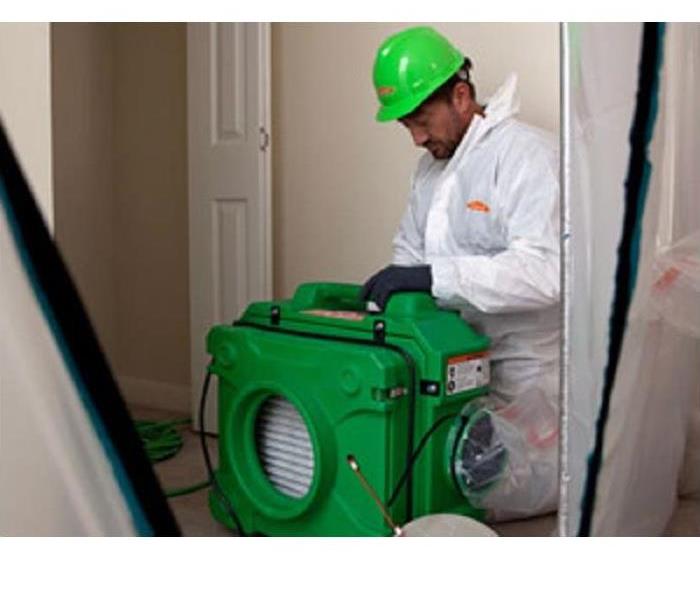 Mold can spread through a home in as little as 48 hours
Mold can spread through a home in as little as 48 hours
If you see visible mold, do not disturb it. You can inadvertently spread the mold infestation throughout your home. When mold is disturbed, the mold can release microscopic mold spores which become airborne and can circulate inside your home.
What to Do:
- Stay out of affected areas.
- Turn off the HVAC system and fans.
- Contact SERVPRO of Woodridge/Bolingbrook for mold remediation services.
What Not to Do:
- Don’t touch or disturb the mold.
- Don’t blow air across any surfaces with visible or suspected mold growth.
- Don’t attempt to dry the area yourself.
- Don’t spray bleach or other disinfectants on the mold.
About Our Mold Remediation Services
SERVPRO of Woodridge/Bolingbrook specializes in mold cleanup and restoration, in fact, it’s a cornerstone of our business. Our crews are highly trained restoration professionals that use specialized equipment and techniques to properly remediate your mold problem quickly and safely.
If You See Signs of Mold, Call Us Today – 630-771-1720
Does Your Woodridge Home Have a Mold Problem?
4/13/2017 (Permalink)
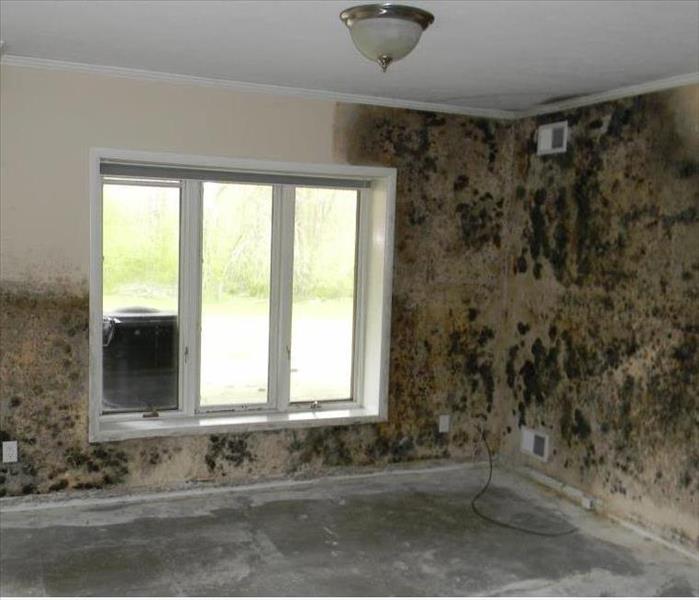 In Woodridge mold can spread through a home in as little as 48 hours.
In Woodridge mold can spread through a home in as little as 48 hours.
Microscopic mold spores naturally occur almost everywhere, both outdoors and indoors. This makes it impossible to remove all mold from a home or business. Therefore, mold remediation reduces the mold spore count back to its natural or baseline level. Some restoration businesses advertise “mold removal” and even guarantee to remove all mold, which is a fallacy. Consider the following mold facts:
- Mold is present almost everywhere, indoors and outdoors.
- Mold spores are microscopic and float along in the air and may enter your home through windows, doors, or AC/heating systems or even hitch a ride indoors on your clothing or a pet.
- Mold spores thrive on moisture. Mold spores can quickly grow into colonies when exposed to water. These colonies may produce allergens and irritants.
- Before mold remediation can begin, any sources of water or moisture must be addressed. Otherwise, the mold may return.
- Mold often produces a strong, musty odor and can lead you to possible mold problem areas.
- Even higher-than-normal indoor humidity can support mold growth. Keep indoor humidity below 45 percent.
If your home or business has a mold problem, we can inspect and assess your property and use our specialized training, equipment, and expertise to remediate your mold infestation.
If You See Signs of Mold, Call Us Today – 630-771-1720





 24/7 Emergency Service
24/7 Emergency Service